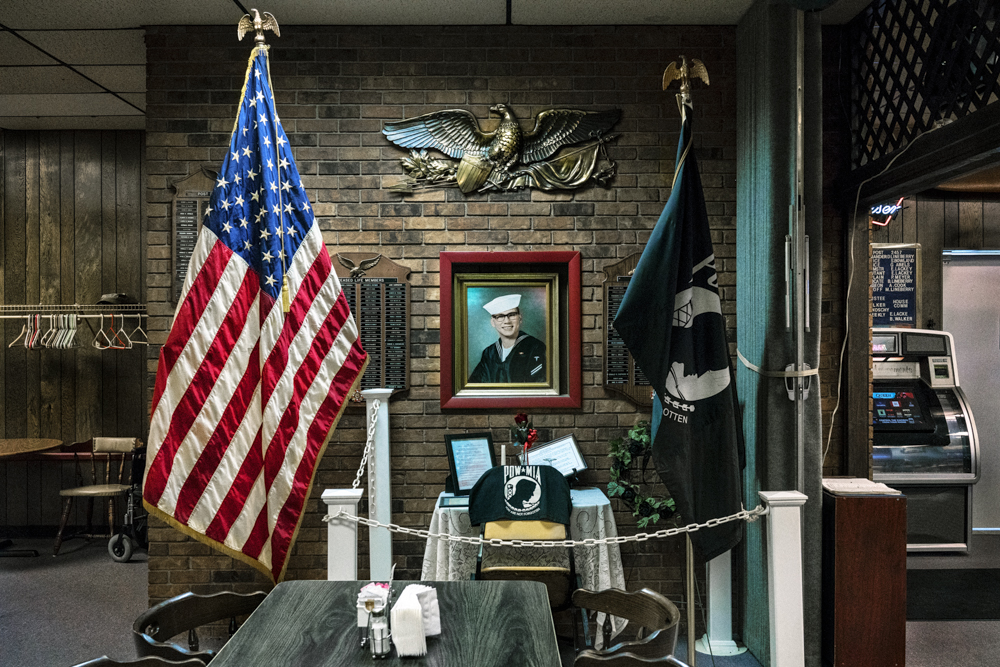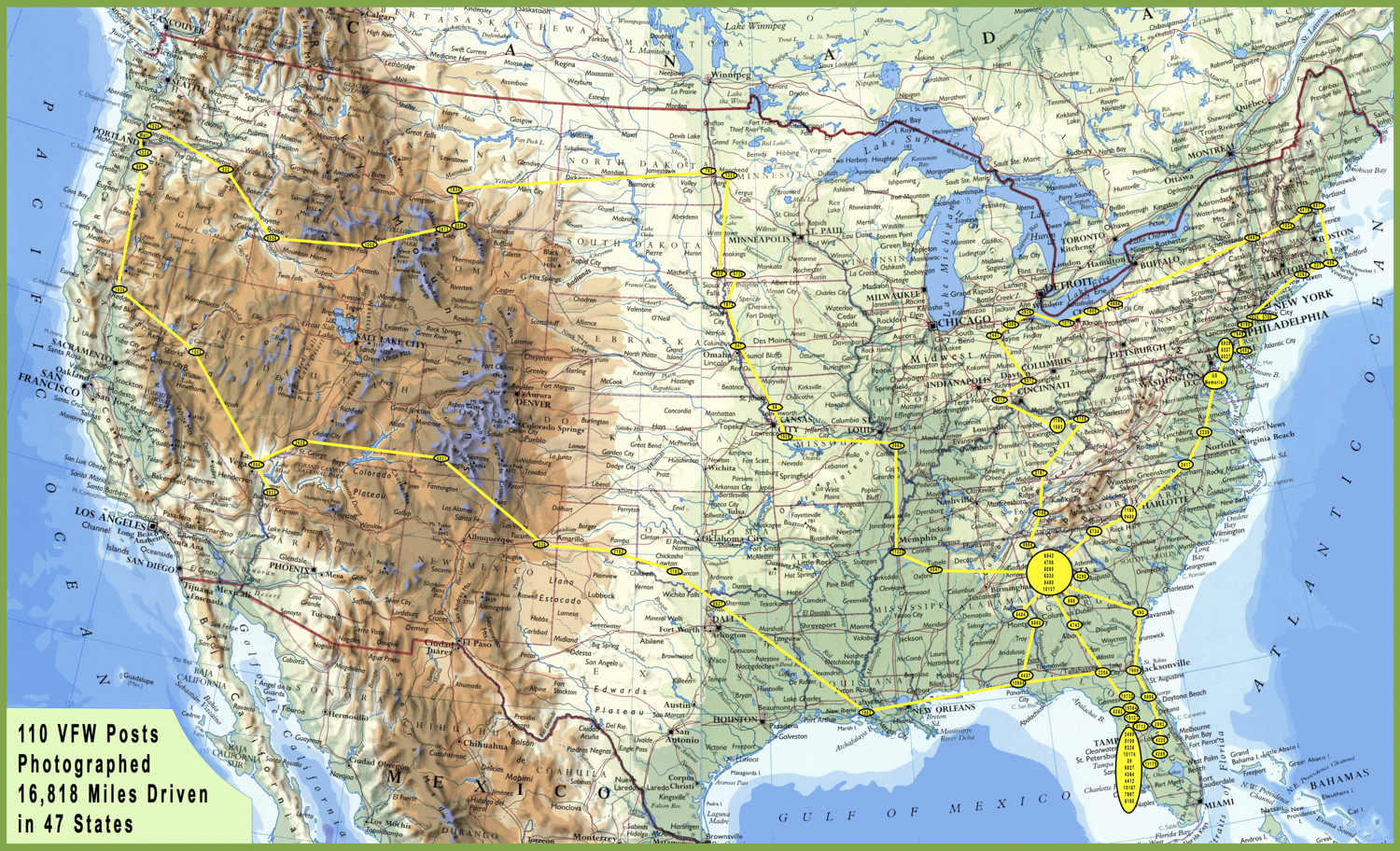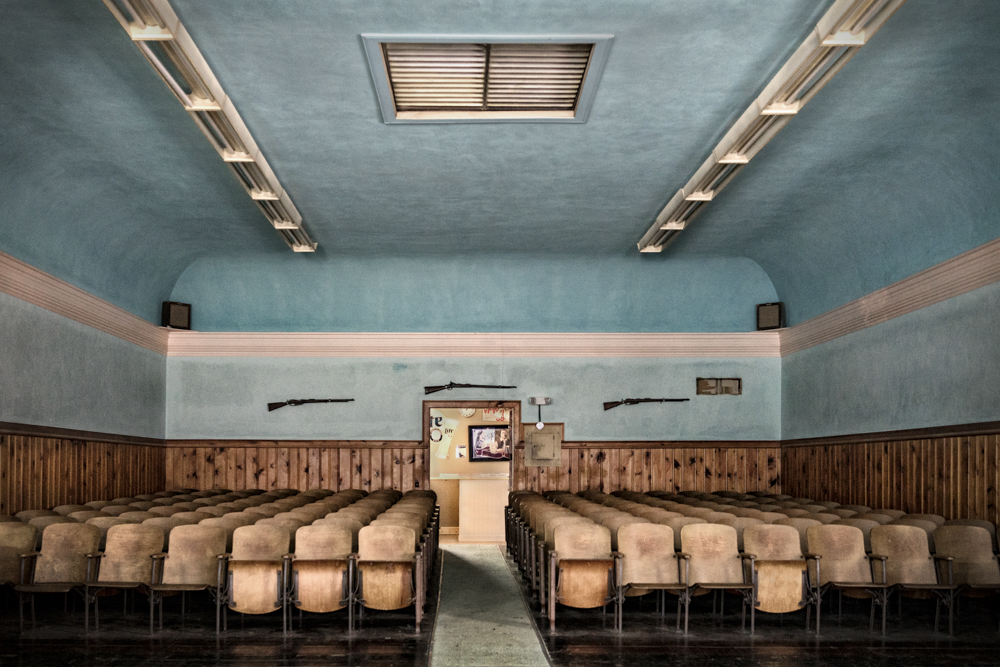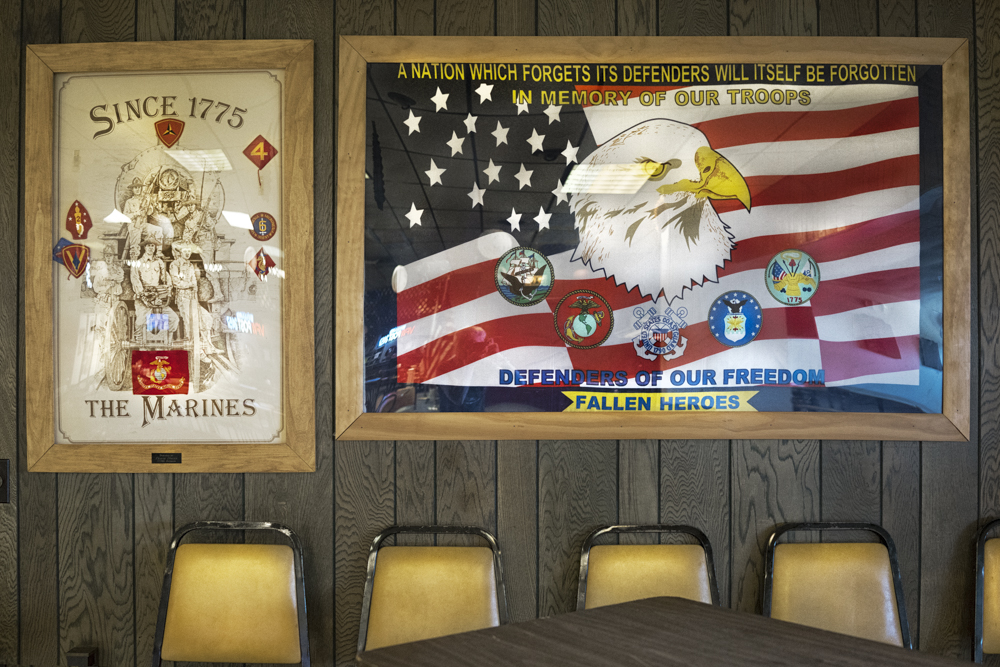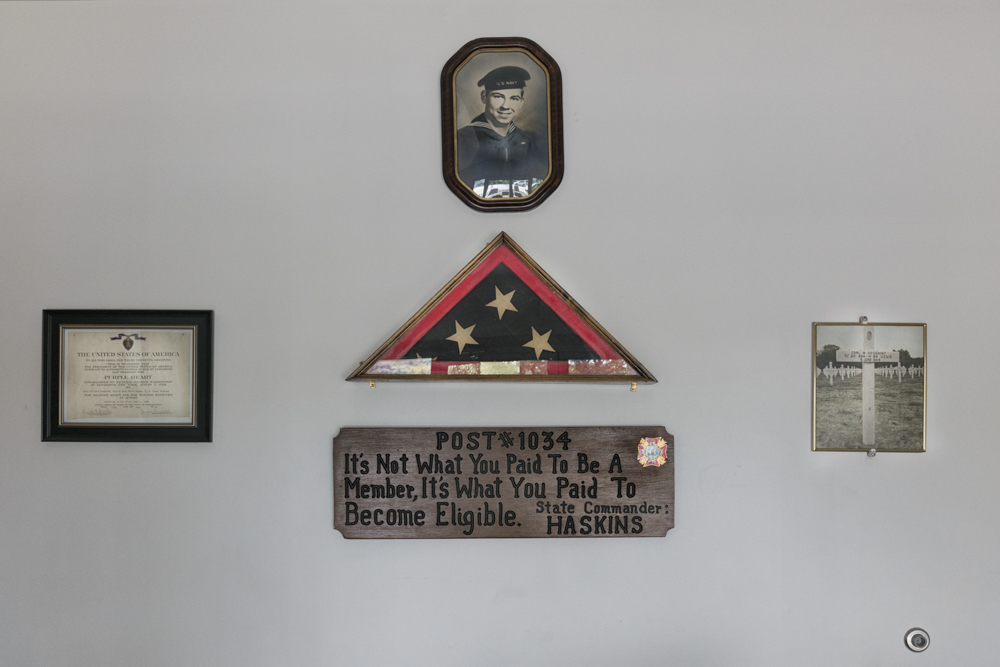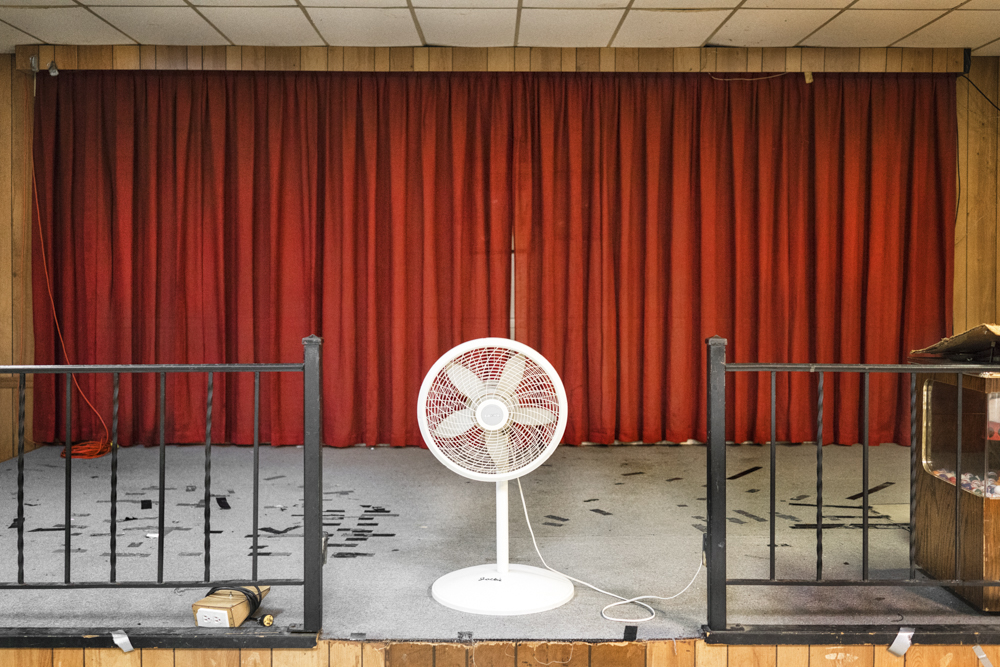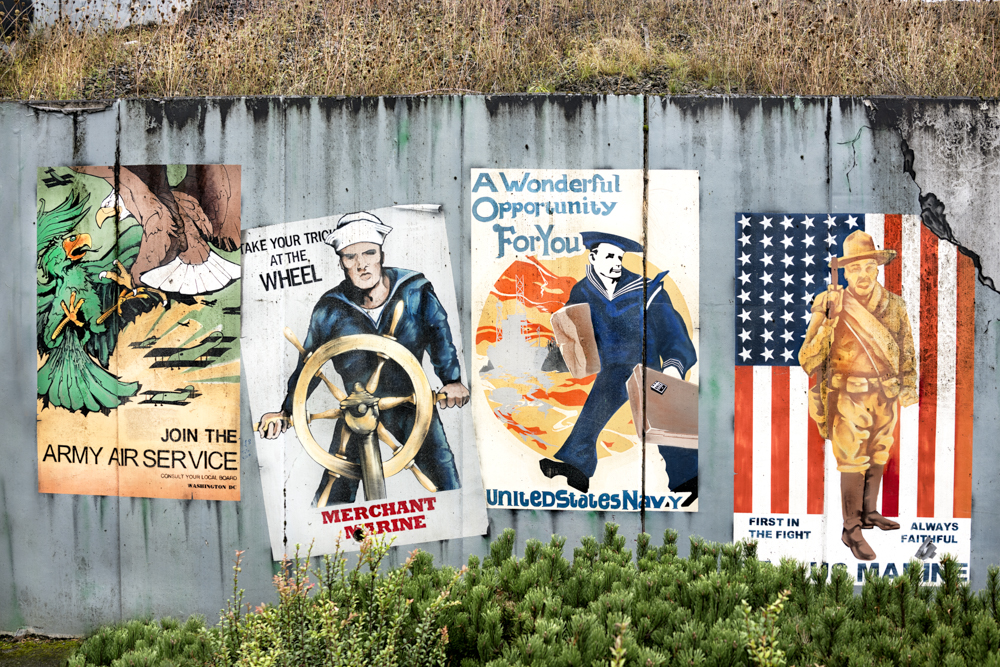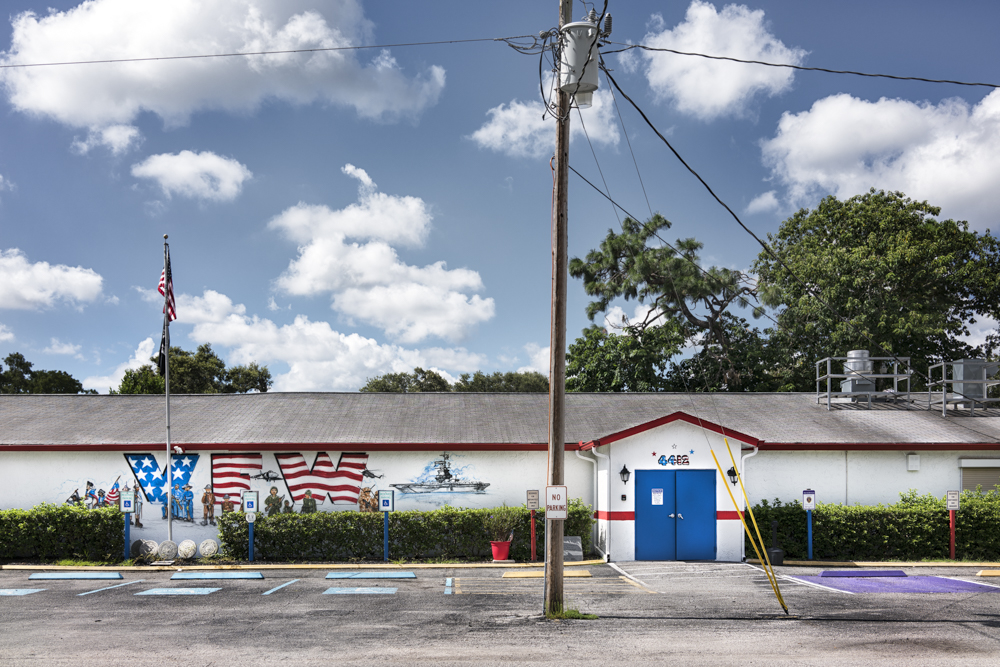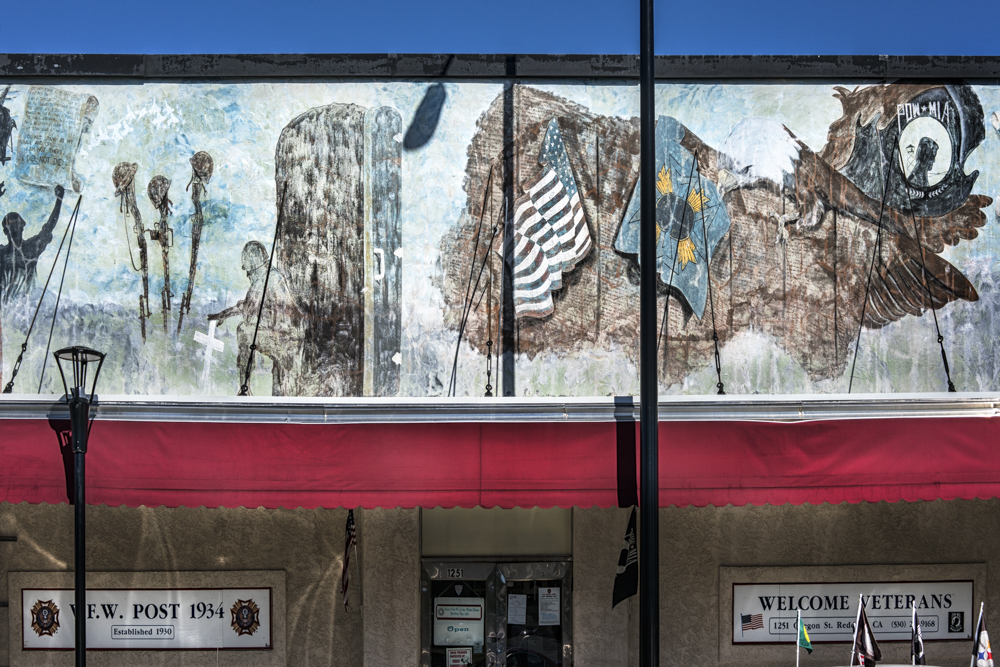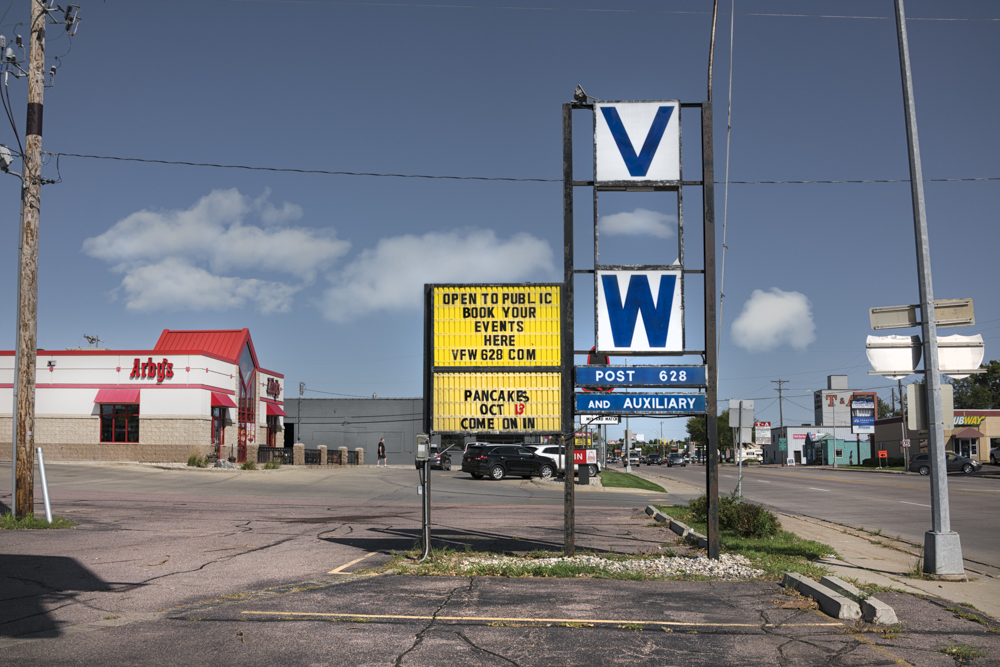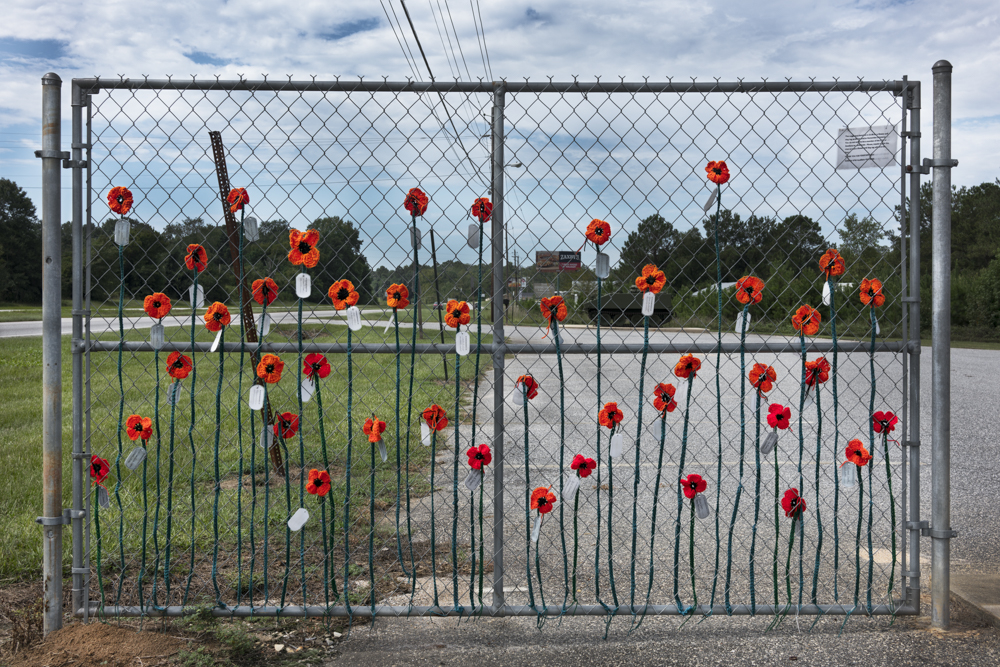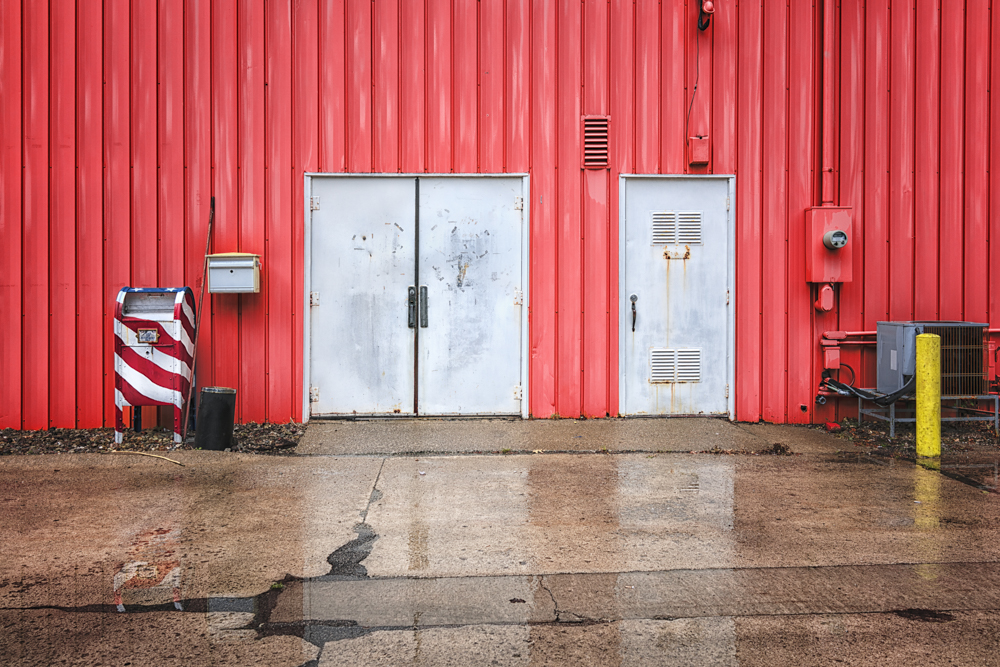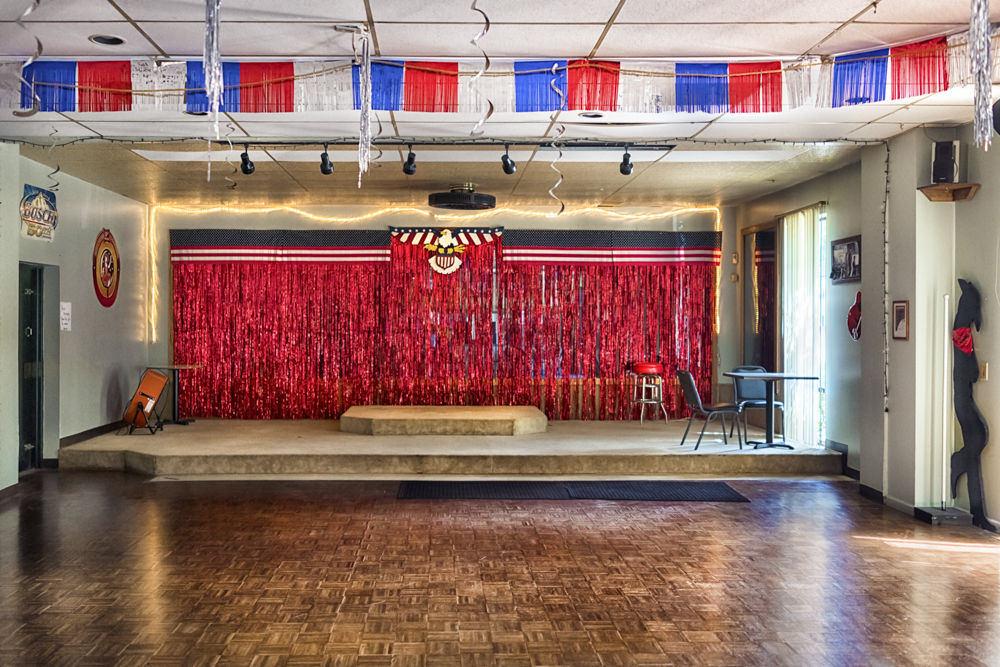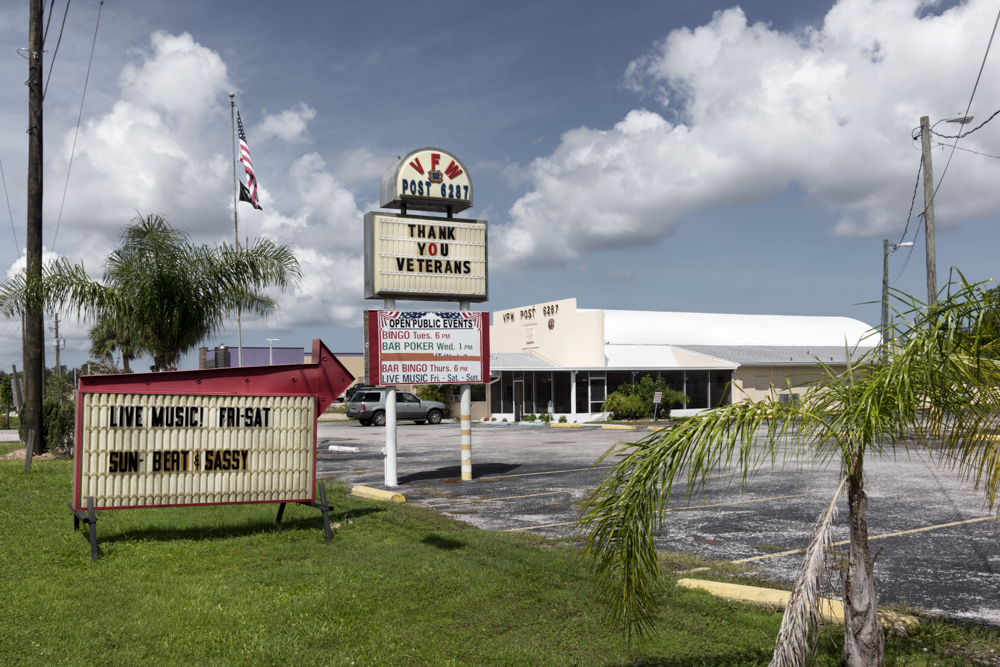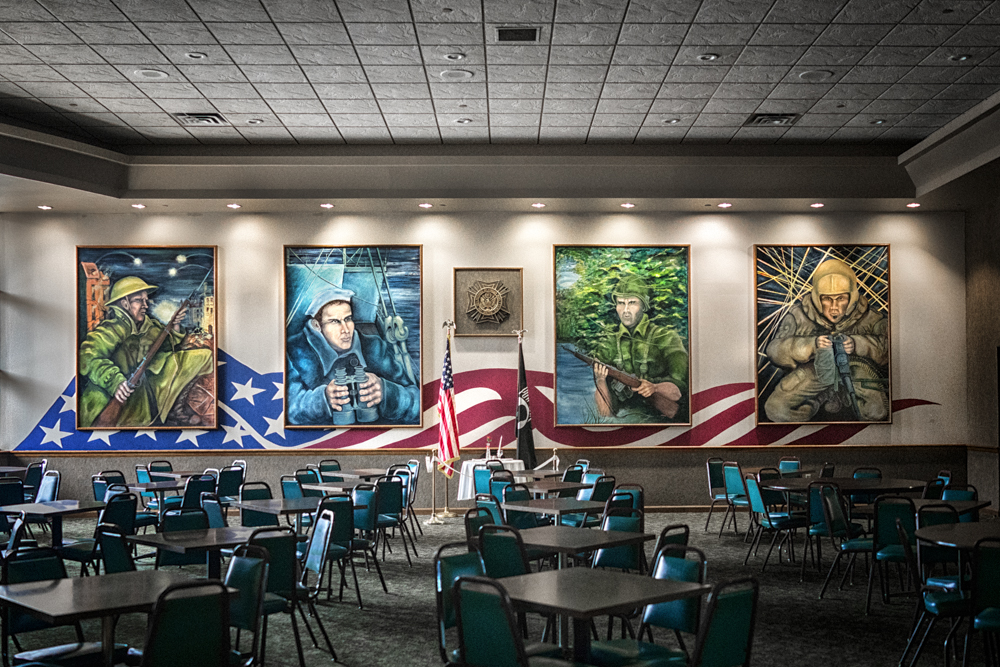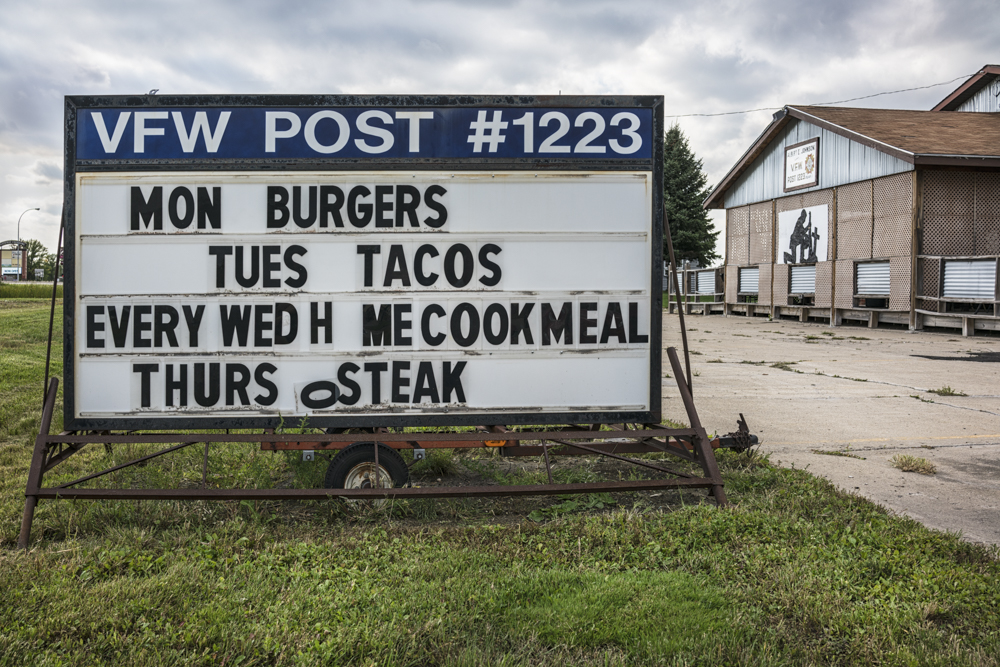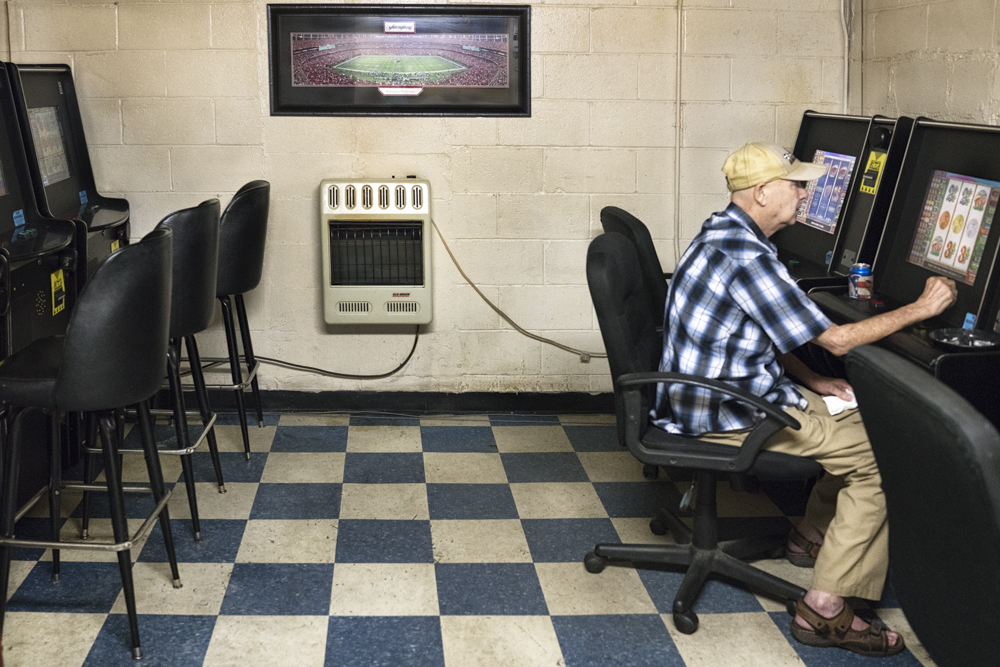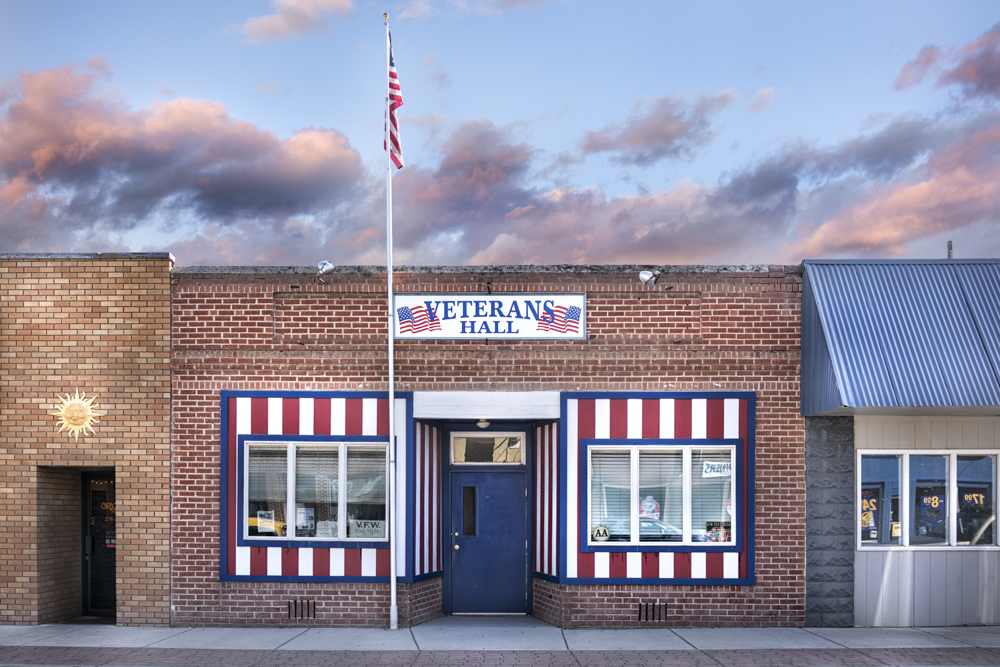Teri Darnell: Veterans in Crisis
I met Teri Darnell several years ago at an Atlanta Photography Group exhibition. Shortly after that we were both chosen to be a part of the “Edge to Edge” exhibition at MOCA GA and were both on a panel that discussed the exhibit. As I have gotten to know Teri, I find that she is humble about herself and her work. Teri served six years in the United States Air Force, notably in Berlin during the Cold War. In 2015, she retired after twenty-five years of service with a Fortune 50 company as a multi-media development manager to pursue her passion in photography. Currently, she serves on the Board of Directors for Atlanta Celebrates Photography in Atlanta, Georgia. I admire Teri’s work and her passion to photograph people and places that most people do not see. Her project Veterans in Crisis shows her compassion to help others.
Teri Darnell is a photographer who finds inspiration in people, places and culture. She was born in Cleveland, Ohio and half raised near Detroit, Michigan and the other half in the Appalachian Mountains on the Ohio River. Her work has been displayed across the globe in Tbilisi, Beijing, Berlin, Paris, London, New York City, and Atlanta.
In 2020, Teri received a grant from Idea Capital in Atlanta to move her VFW project forward. In 2019, she was a Critical Mass Top 200 Finalist. In 2018, Elizabeth Avedon honored her book ‘Crossing Cheshire Bridge’ as one of the best photography books of the year. Also in 2018, she was nominated for the Royal Photographic Society in London as a ‘Hundred Heroine,’ won Silver and Bronze awards in Fine Art and Portraiture from Prix de la Photographie, achieved 3rd place of 2,000 entries at the SOHO National Photo Competition in New York City, and her Cheshire Bridge Road Collection: a decade of 45 thousand digital images, draft and first edition books, archival prints, and collaterals was acquired by Emory University’s Manuscripts, Archives & Rare Books Library (MARBL), Atlanta, Georgia . She is a graduate of Baldwin Wallace University with an EMBA and The University of Maryland with a B.S. in Business Management.
Teri built a successful career in global multi-media training and development with United Parcel Service for twenty-five years before turning to full time photography. She served six years in the United States Air Force, notably in Berlin during the Cold War. Currently, she is a Board member
Veterans in Crisis
My pictures explore uncommon, little-known cultures and means of personal and human expression. I take each image with a caring reverence. My photographs reach a place in the heart that words alone are incapable of touching. My VFW project focuses on the deterioration and breakdown of places that once were pillars in our communities. My images show hope for those VFW posts that get involved in the community and remain prosperous. They also display the current state of many posts that are in disrepair and decaying – symbolic to how we treat our veterans who return from war.
War veterans have a bond of silence. Horror stories are usually only shared among those who served in war. Without camaraderie and support, these memories percolate and often cause anger, depression, lack of sleep, and many other symptoms that can lead to suicide. Photographs have the power to begin conversations about the untreated silence that hasn’t healed. Images have the power to recall memories and discuss traumatic situations. Veterans’ war experiences are often buried so deeply that only others who share similar wounds can help them heal. We are losing the places that were once the support structure for veterans to overcome their war tragedies. Problems that they continuously ignore often come back to haunt them. Veterans desperately need the support of their local VFWs to integrate back into their communities.
My images are timeless and have a significant historical importance. What you see inside may look as if the image was taken decades ago. Pictures remain a critical medium through which ideas for change propagate across our cultural landscape. Images have a way of getting people to believe in a cause and to do something about it to make a positive difference.
VFW posts are in view as we drive by them but not typically seen or thought about. Today, they are mostly a forgotten part of American history. My images propose the question: ‘If VFW posts are not the answer to help veterans in current times, then what is the solution?’ My project acknowledges that veterans are in a crisis, the images and stories provoke thought, but they do not solve the problem. I hope the project will help create a national conversation about what we can all do to provide more support for our veterans, especially those who need mental health care and are not currently receiving it. – Teri Darnell
I know you are familiar with military life because you were in the military. Please tell us a little about that.
I helped protect the freedom of West Berliners while stationed at Tempelhof Air Base in West Berlin during the Cold War before the collapse of the Berlin Wall. My job as an Aerospace Warning and Control Systems Operator was to protect the airspace surrounding the three air corridors that non-communist countries used to enter West Berlin through the communist East Berlin.
Tempelhof Central Airport was Hitler’s headquarters while he was in power. Few people know that Tempelhof had a concentration camp for political prisoners called the Columbia House. At least 8,000 men were prisoned inside the Columbia House – primarily men who were political and spoke out, Jews, communists, social democrats, intellectuals, democrats from different professions, and gay men (who at times made up over half of the prisoners). Columbia House was dissolved in 1936 and prisoners were moved to Sachsenhausen in Oranienburg, Germany.
When I arrived for duty in Berlin, part of orientation was visiting Sachsenhausen. The Nazi concentration camp was used primarily for political prisoners too. Meat hooks lined the walls. During Hitler’s regime, prisoners hung on the hooks until shot, hanged or gassed to death in the chambers. This horrific visual was etched in my mind forever. At that moment, I understood the importance of freedom and protecting our democracy and those of our allies against the control of communist powers. Today, I feel like our country is losing sight of the significant sacrifices our military makes to secure our freedom and defend our democracy against foreign powers so we don’t have the same thing happen to us. If we lose sight of the importance of our military and veterans, we become vulnerable to foreign powers ruling our nation.
What first prompted you to begin the VFW project?
In 2017, I drove past VFW Post 6287 in Apollo Beach, Florida while visiting my mom in Sun City Center. I have driven past VFWs posts before but I thought they were clubs for older veterans, like my dad who served in the Korean War. Something told me to take a U-turn and it changed my life.
I didn’t know if I was allowed to go inside or not. I was nervous, like I used to feel before I walked into a bar with my camera on Cheshire Bridge Road in Atlanta, an eclectic strip that I photographed for twelve years. I was nervous because some people get defensive when I ask to take pictures inside their business. I didn’t know what to expect at this VFW post.
Bingo was about to start when I entered. The place was filled with smoke. I saw a guy in a wheelchair with ‘First Marine Division’ on his ball cap. I asked him about the cap and he corrected me. It was his ‘cover,’ not a ball cap. One lady gave me a dirty look for talking while they were calling numbers for bingo. After the second number was called, I could tell that I was distracting the marine’s rhythm as he fidgeted. I stepped aside and became an observer.
They all knew each other, like a family, giving each other support and jabs at the same time. I watched as the night unfolded and saw a place that people felt safe and at home. It was their home, away from somewhere else. I wanted to know if the same camaraderie was shared in other VFWs, and it was – each and every one.
What is causing the demise of VFW’s?
Membership has drastically fallen over the last few decades from a high of over two-million to just over half that number. VFW posts have suffered from a war of attrition, many demolished for gentrification and others abandoned or falling into disrepair from neglect and lack of funding.
The Gulf War Era has the largest group of veterans with 7.6 out of 19 million total veterans alive today. These veterans are busy raising families and mostly not interested in going to VFWs. I heard from the older vets that the younger ones don’t relate with their war stories. Also, there aren’t as many Korean Conflict and World War II vets still alive, 1.1 million and 389,000 respectively. Those two groups encompassed the majority of VFW members for decades. The Gulf War veterans aren’t taking their elders places at VFW posts. Additionally, there are over 6 million Vietnam veterans. Because they weren’t honored on their return from war and often discouraged from joining the VFW when they got home from war, many have less interest in joining today.
Photographing these posts brings a sadness to me for what I feel is a metaphor for our treatment of those who served. Many veterans needing mental health care are not getting the support that they deserve from their communities or our government.
I didn’t realize that my service in Berlin, Germany during the Cold War made me eligible to become a member of the VFW. I didn’t know that I was eligible to join just with my dad’s war service. I didn’t know anything until I went inside and asked. I’ve been missing out on the benefits of the VFW for a long time – since I left the military. I bet a lot of veterans, families, friends, and relatives don’t realize that they can become members too. I hope my project will help bring awareness to VFWs and get new veterans to join and current members to ask others to join too.
What effect does this have on veterans?
The social fabric of veterans has suffered as a result of the decline in VFWs at a time when America has been in continuous wars since the early 2000s. The story of these posts is the story of America, once united, now feels divided and disconnected from our roots.
Every day in this America we lose an average of 20 veterans to suicide. Many veterans, particularly in rural areas, are losing access to the needed services VFWs provide. From 2008-2017, over 6,000 veteran committed suicide each year. The rate has jumped from 16 to 20 per day since year 2005. Suicide rate is greatest within three years of leaving service. I believe that is where VFWs can help veterans the most, but there is a big disconnect for bringing new veterans and the VFW together. I believe that as VFW posts disappear, suicide rates will continue to increase.
How many VFW’s have you visited? Tell us a story of one of your visits.
After photographing VFW Post 6287, it became a mission for me to photography as many as I can, before they are all gone. To date, I have documented 110 posts in 47 states with a goal of photographing at least one VFW post in all 50 states. My wife, Julie Neville visited VFW Post 10555 Emerald Coast in Panama City Beach, Florida with me. She wrote this story:
“Turn here,” Teri said.
“This is not a road,” I said.
“Yes, this is the right way,” she said.
On a hot humid summer night on the Florida Panhandle, there it was, as she said. A glowing yellow metal building appeared under a spot light that shined on the high-flying flag and nearby palm trees.
Not just any flag, but our red, white, and blue flag honoring those who fought and died for our freedom.
We walked inside the VFW Post. A man behind the bar said, “We’re about to close.”
Teri said, “We’re not here to drink, I’d like to speak to the commander.” One by one, several people in an informal chain echoed the request that reached the back of the large rectangle building.
The commander came out of the industrial sized kitchen walking past a round table filled with men and women veterans tasting bourbon.
“Who are you, where are you from, and what do you do?” the commander asked firmly.
“I am Teri Darnell. I’m a member of the VFW in Atlanta. I am working on a project photographing VFW Posts around the country to bring awareness to others about this great organization and hopefully increase membership.”
“I am so happy that you are here,” said Commander Susan Johnson, looking at Teri straight in the eye and offering a firm handshake.
Susan is one of three women now in charge of VFW Post 10555, proudly pronounced by Commander Johnson as Ten-Triple-Nickle. The post leadership and members create a positive impact on the community of Panama City Beach, Florida by getting involved. Hurricane Michael’s devastation to the surrounding community kept them busy all last year.
Ten-Triple-Nickle is one of over 6,000 VFW Posts in the United States. Teri plans to photograph a least one post in each of our 50 states.
So, what is the VFW, who are these veterans, and why is membership so important?
You can find out by joining Teri on her journey. Learn more and keep up-to-date by visiting her website at http://www.teridarnell.com.
What do you want to accomplish with this series?
My goal is to publish photographs that can reach a place in the heart that words alone are incapable of touching and to be a catalyst for a national conversation on how veterans are treated. For starters, I plan to publish a photography book using the images I captured during my travels to 47 states. I also want to have a traveling photography exhibition at all major airports and museums to bring national attention to this crisis.
My book will focus on the deterioration and breakdown of places that once were pillars in communities. My images show hope for those VFWs that get involved in the community and remain prosperous, but it also shows the current state of many VFWs that are in disrepair and decaying.
What audience are you hoping to reach with this series?
I would like to reach 19 million United States military veterans and our families, friends, and relatives who know a military person or veteran. I hope other photographers and art historians will support my project too. I especially want to reach into every community that has a VFW post. I hope my future book and traveling photography exhibition will help bring new members to the VFW. The support goes both ways. Veterans provide support to their communities through the VFW too.
What hurdles have you had?
My biggest hurdle is not having the funds needed to keep moving my project foreword. So far, I have spent over $20,000 of my own money traveling to 47 states and have photographed 110 VFW posts. I received a $2,000 grant from Idea Capital in Atlanta in January 2020 and that helped tremendously! Now, I need to raise at least $15,000 to publish a photography book and fund a traveling photography exhibition. I recently created a gofundme campaign at https://www.gofundme.com/f/q6r5w-veterans-in-crisis to raise money for this important project titled ‘Veterans in Crisis.’ I hope others will reach into their hearts and donate to help veterans by helping me create a national conversation about this crisis.
Posts on Lenscratch may not be reproduced without the permission of the Lenscratch staff and the photographer.
Recommended
-
Paccarik Orue: El MuquiDecember 9th, 2025
-
Lauri Gaffin: Moving Still: A Cinematic Life Frame-by-FrameDecember 4th, 2025
-
Dani Tranchesi: Ordinary MiraclesNovember 30th, 2025
-
Art of Documentary Photography: Elliot RossOctober 30th, 2025
-
The Art of Documentary Photography: Carol GuzyOctober 29th, 2025

